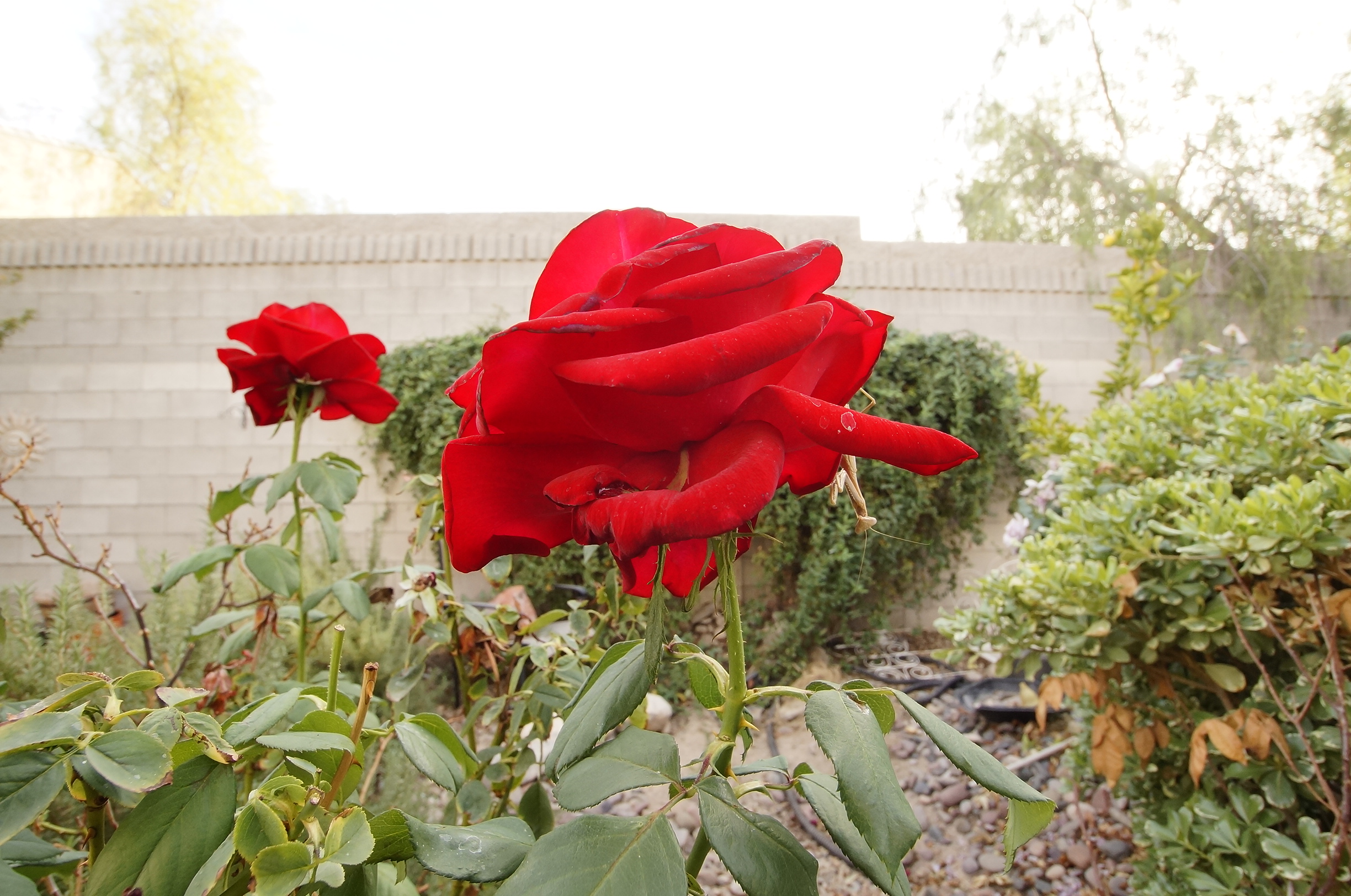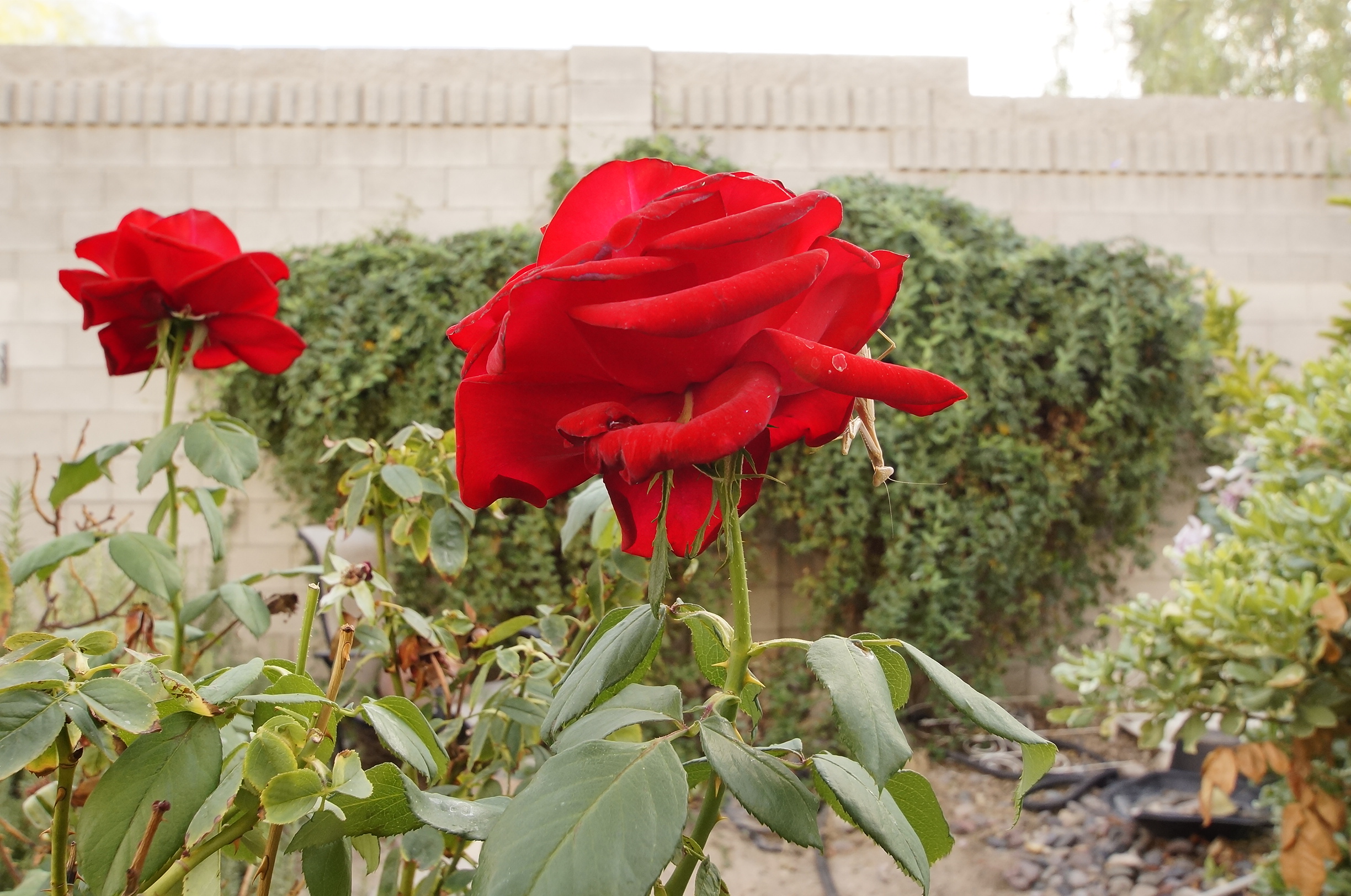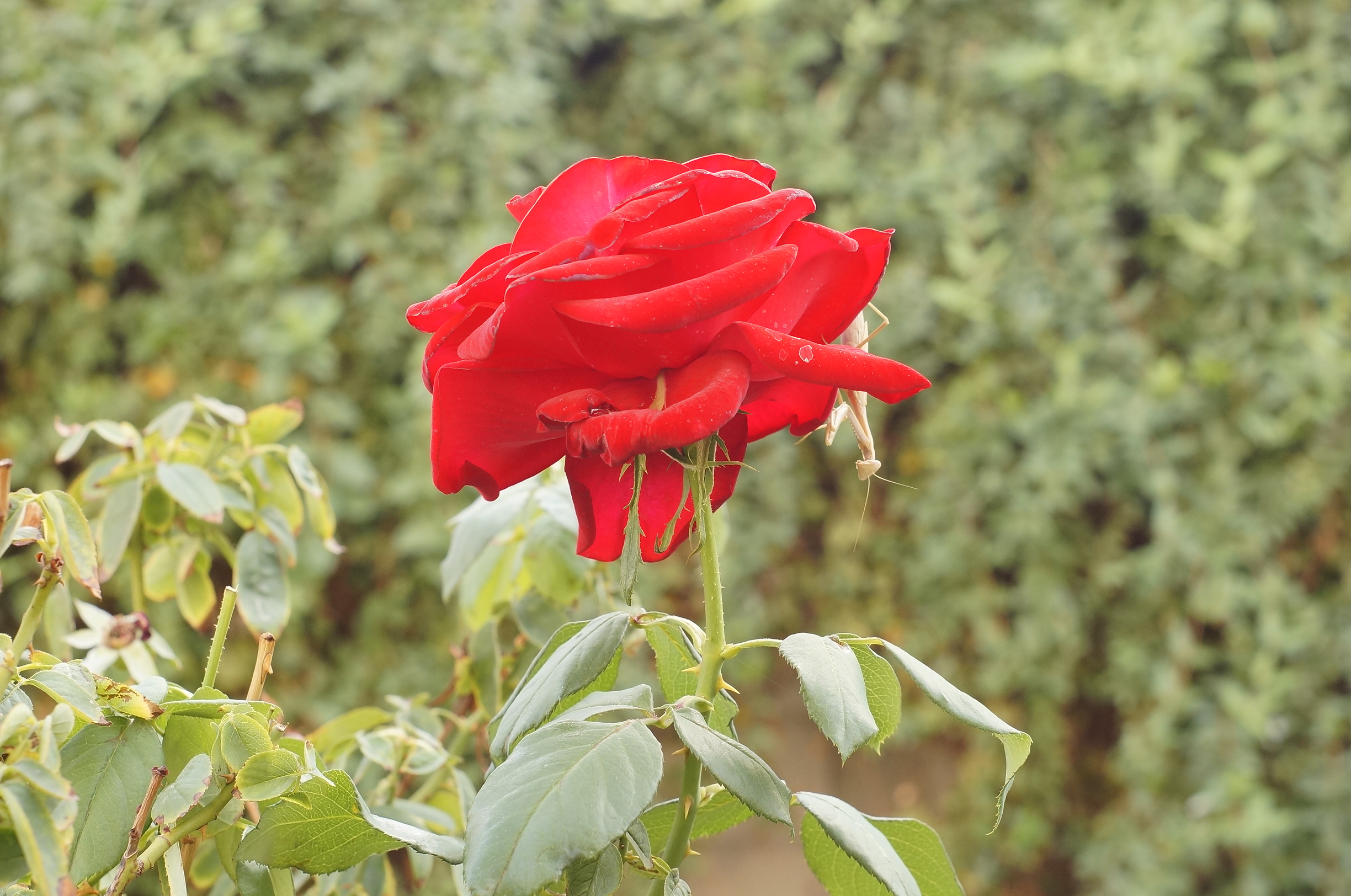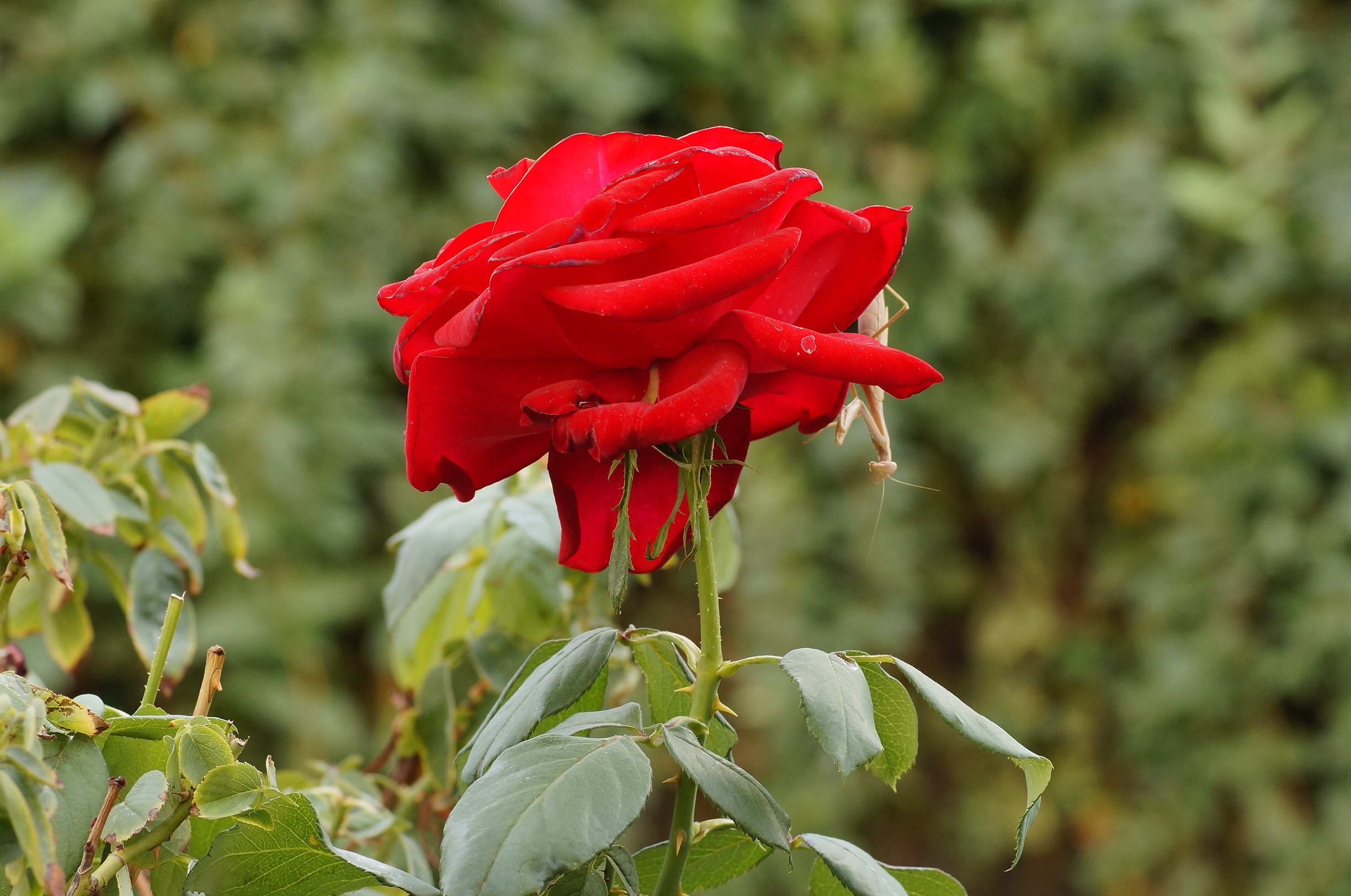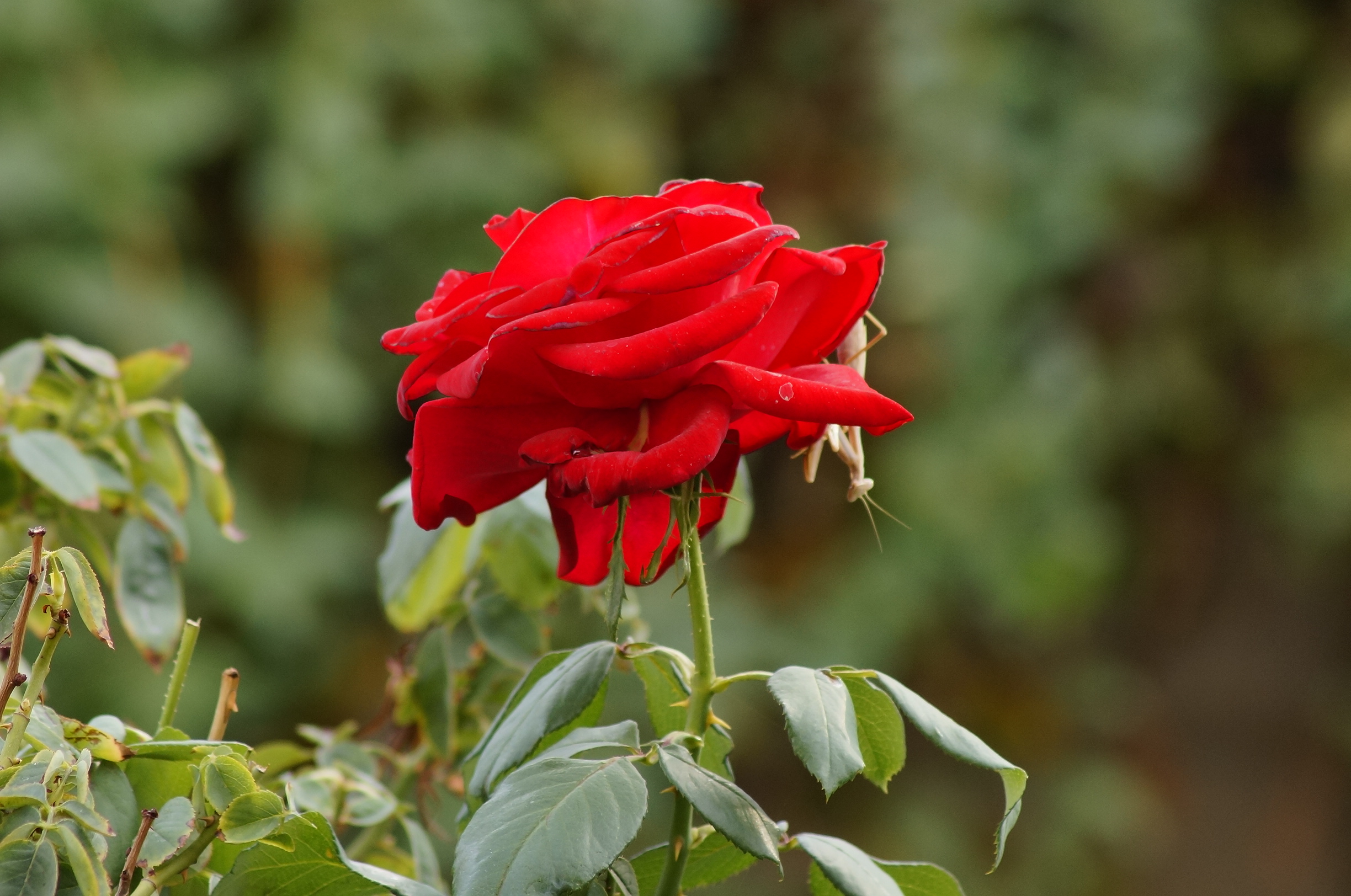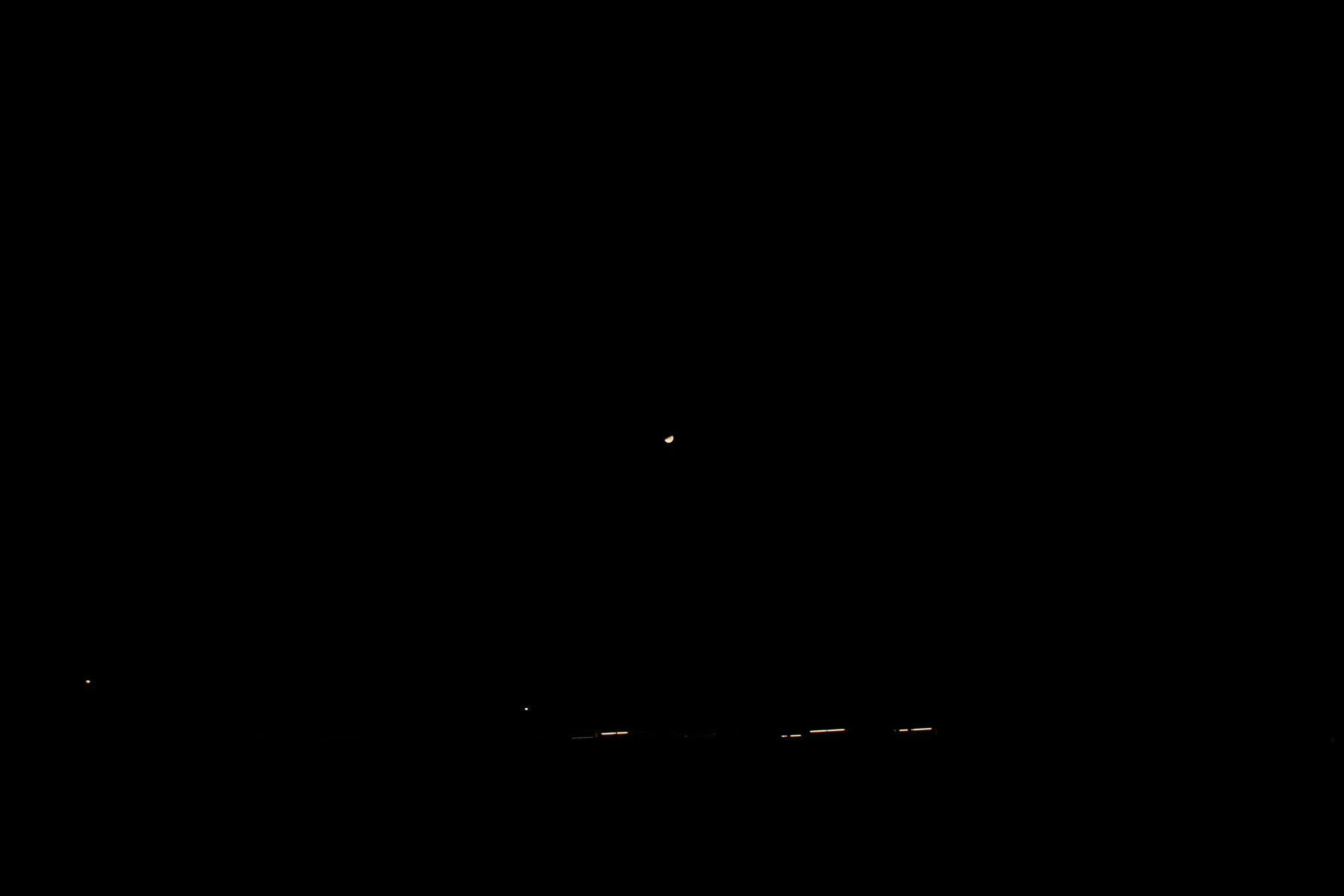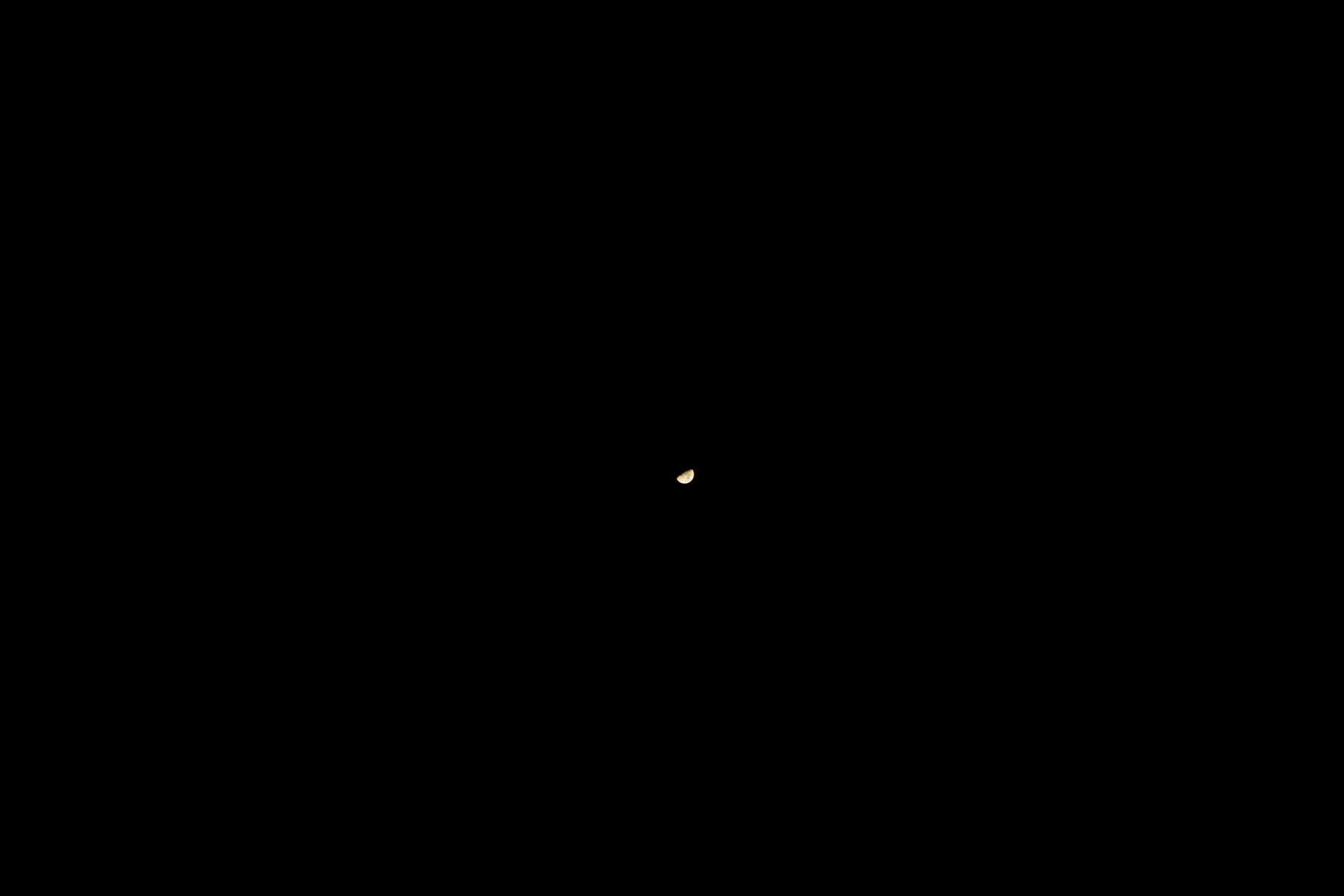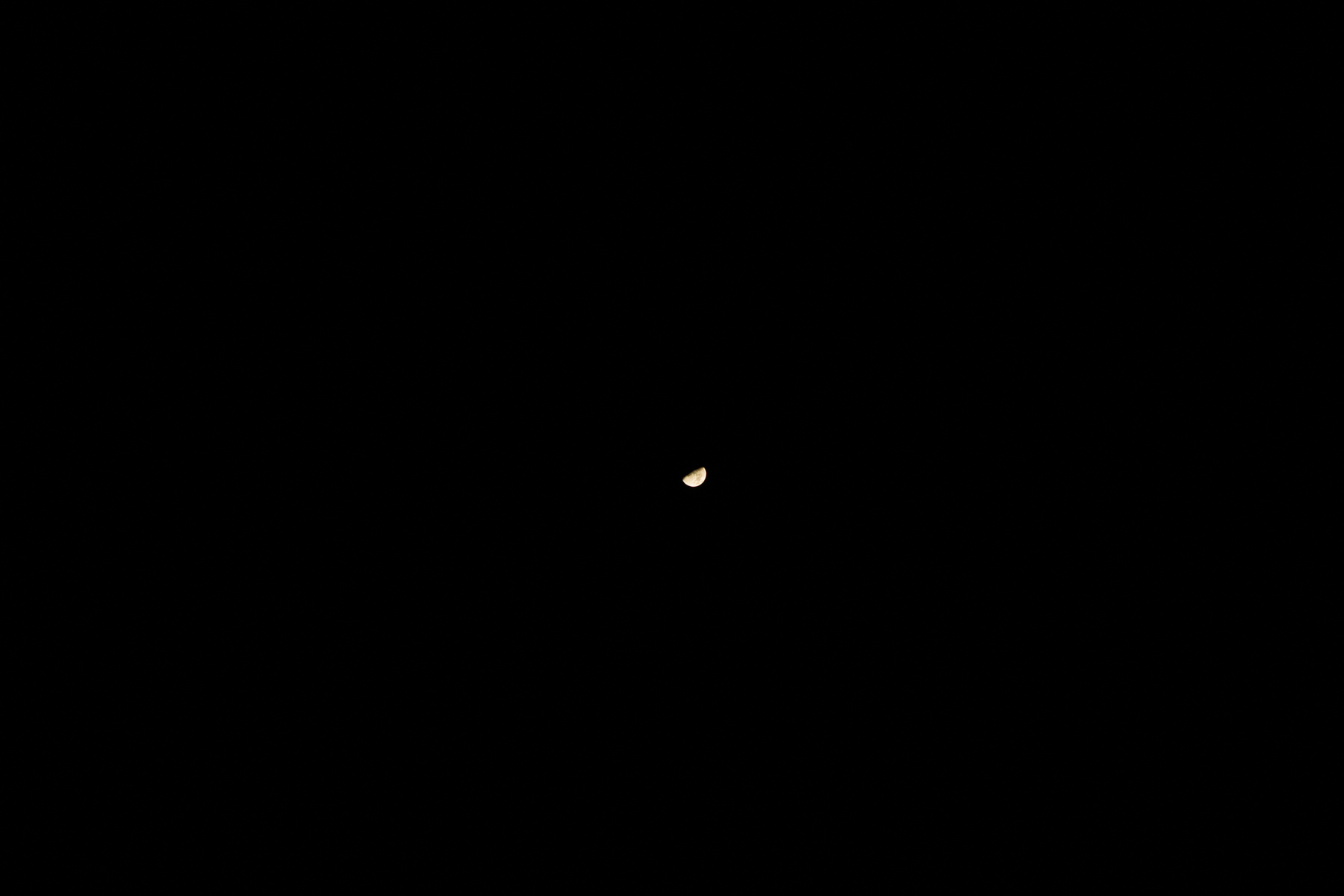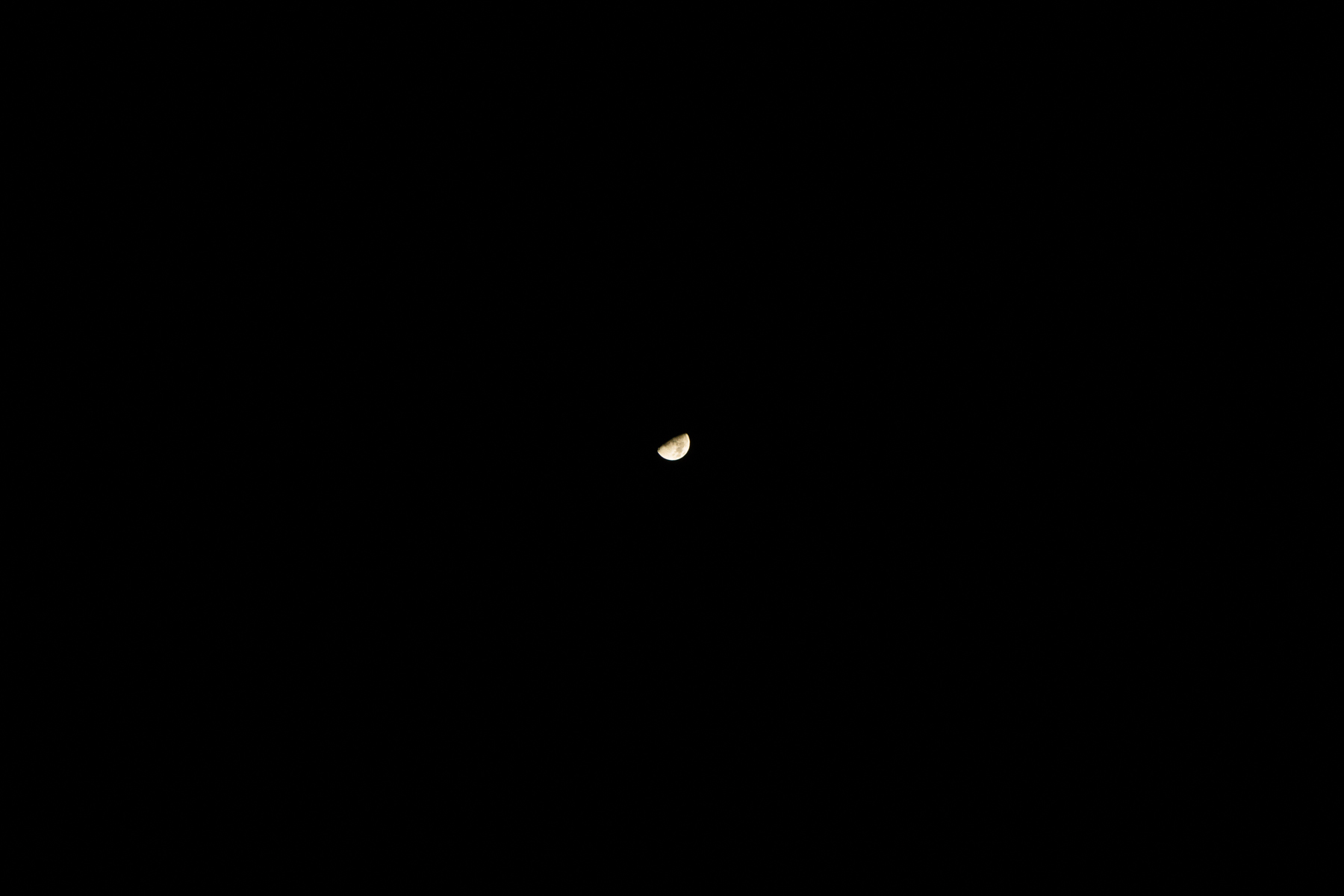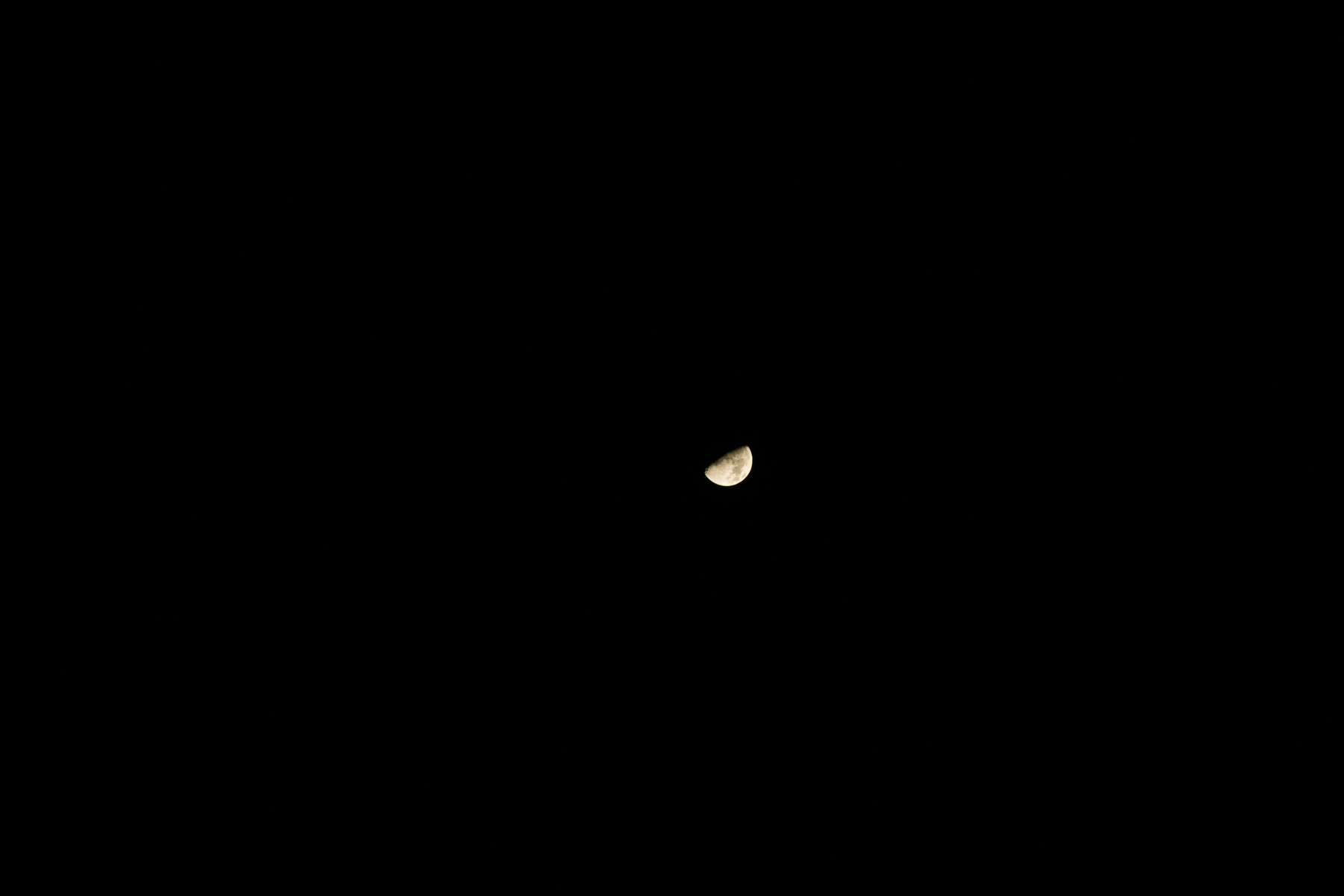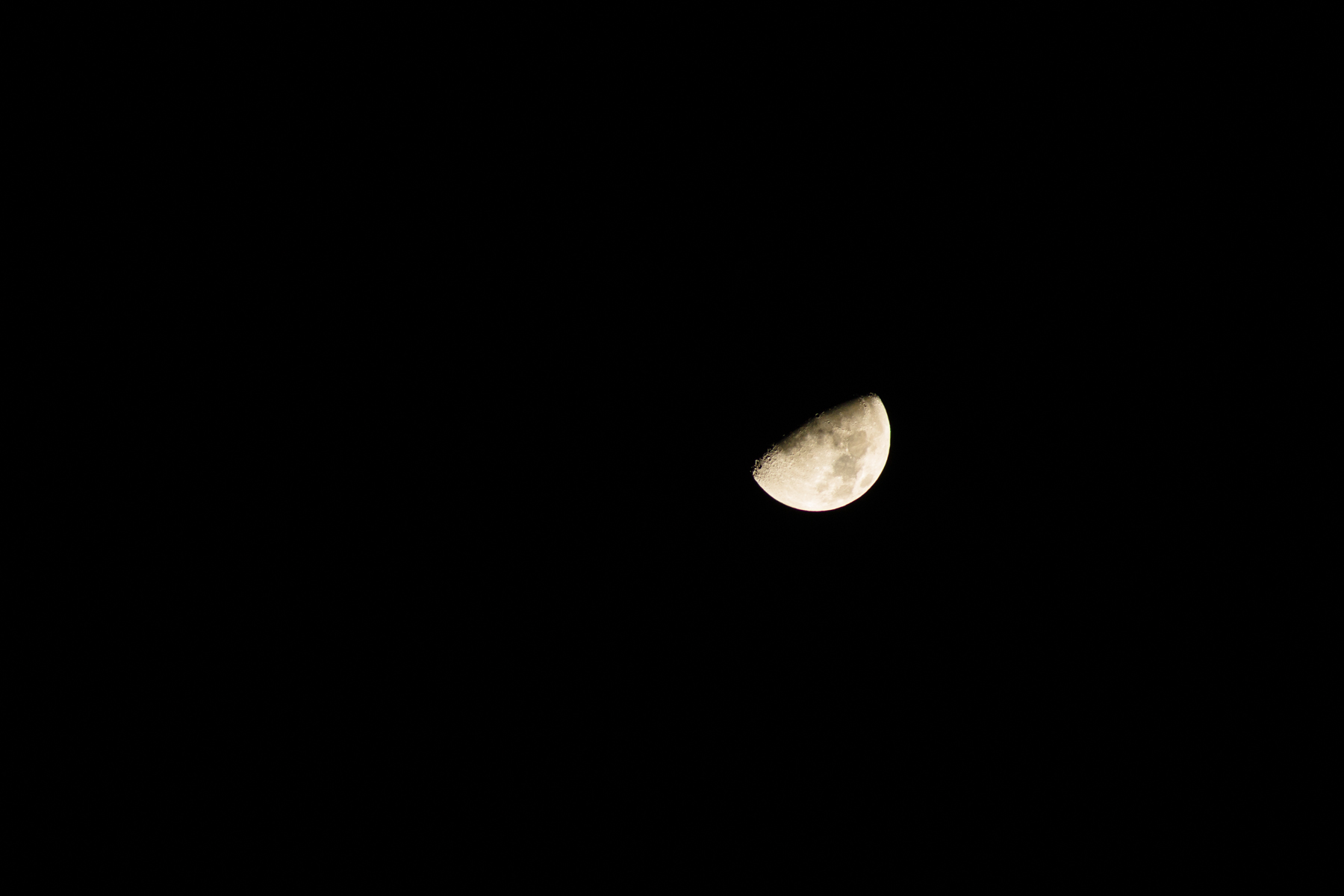Good Morning,
Today we are going to talk about focal lengths and their effects on images. We have discussed different focal lengths and what they are generally used for. We have not talked about how they affect the image or rather the relationship between subject and background. Below is a series of a red rose with a praying mantis on it in my backyard. I tried to stay focused on the same spot of the rose but moving and changing lenses does not help, thankfully the wind didn't give me any issues. First image is at 11mm, some distortion can be seen on the wall and the area of focus is wide and it looks like the wall is pretty far away. The second is at 18mm and the wall looks closer, pretty much everything looks closer or tighter, the distortion at the wall is negligible, and praying mantis is still judging us. Third we have 50mm and we can barely see any of the wall, the image is a bit brighter, I didn't have it on manual and it changed shutter speed was changed in Av. The honeysuckle doesn't look as far as it did before and out area of focus seems to have shrunk. Fourth is 100mm and it was switched to manual mode. The praying mantis is so judgemental and has been for a while. It appears that the honeysuckle is just behind the rose bushes leaves and is rather out of focus. Fifth and final image is at 300mm, sorry the angle changed a little to keep in the same size I had to go up a step. The mantis stared directly at the camera, finally. The leaves are hard to make out on the honeysuckle now and look pretty close.
As can be seen through the images. If a subject is kept the same size the relationship with the background can be greatly affected by the focal length of the lens. What we are trying to convey with our images can be changed by zooming. Now go out and shoot.
~Scott
